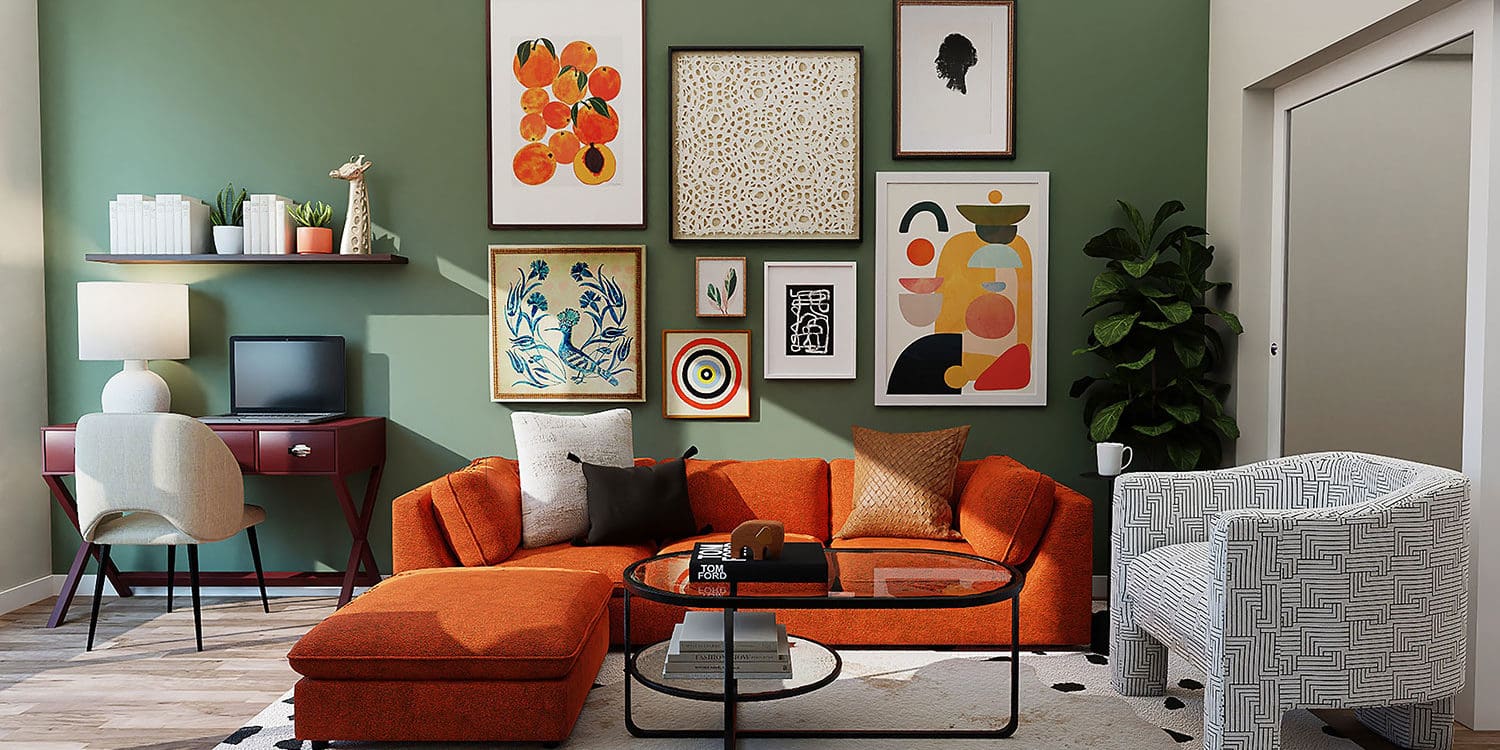Whether you’re a pro or a budding DIY-er, the world of interior design can sometimes be overwhelming. Depending on where you read, there can be so many rules to follow, complicated lingo, and so many options for furniture, decor and layouts – it’s a minefield!
While some aspects of design are best left to the experts, there are a few tricks of the trade that can help you reach the design look you want. We’ve laid out five of the ‘golden rules’ for interior style and design that are easy to follow and will help you get the best results for your home.
Less is more
People often forget just how much space they’ve got – it’s more common than you’d think! It’s not uncommon for people to zone in and focus on picking up all the ‘right’ pieces to decorate and fill the intended room with – think lamp shades, photo frames, plants, ornaments etc. It’s easy to get caught up in finding and buying pieces to fit with the room and the style you’re going for, but actually forget to think about the space itself and maintaining it.
Unless you’re going for an overflowing, maximalist theme, it’s usually best to keep it simple – look at the wider picture and buy piece by piece so you don’t go overboard. In fact, creating an element of airy emptiness is the key to avoiding a busy, cluttered feeling. It also means that if you do come across a ‘must have’ piece, you know you’ve got the space for it!
Light it up
Lighting has the ability to change the whole look and feel of a room – in a bright and positive way. Darkness and a lack of light can have a negative psychological impact, so make sure you invest in a well-lit space.
Lighting doesn’t have to just be practical – it can be both functional and nice to look at! Consider what you’re planning to use the room for, and from there you’ll be able to figure out what kind of lighting will work best. For example, kitchens and utilities are better to be bright throughout, whereas home offices and lounges or TV rooms can have more focused lighting.
It’s generally better to use natural light where you can – you’ll benefit from it being higher quality, plus it’s far more energy efficient (a bonus in today’s energy climate!). You could get creative with different types of lighting; floor lamps are great for darker or duller corners, whereas overhead lights tend to work better for dining tables. And finally, while mood lighting won’t offer as much brightness, it can work perfectly in a lounge area, or along darker hallways.
Get creative with paint
This rule can be one of the most fun to follow, while also creating maximum impact. Often by applying the same colour to walls, skirting boards and even the ceiling, this produces a seamless flow – ideal, as the eye does not have a natural place to stop. This ultimately means that the space will appear larger and more impressive, whether you opt for inky blues, earthy greens or calming neutrals. It’s also a great way to disguise protruding walls, smooth out awkward shapes, and lift sloping ceilings – making it a clever solution to group together and even out any undesirable features, including radiators!
Be well measured
Once you’re decided on what each room or space is going to be used for, it’s time to get planning! If you’ve got your key pieces of furniture and decorations, it’s time now to take a step back and make a plan of where everything is going to go. There are a few simple tricks when it comes to creating and arranging a space, and it all comes down to measurements.
One of the easiest and most commonly discussed interior design rules is the 2:3 rule, otherwise known as the ‘golden ratio’. Essentially, every room you design should follow this. Start off by splitting a room into two sections – the larger one should measure 2:3 of the space, and this will be your area for big pieces of furniture such as the sofa, bed or dining table. The smaller section will house secondary pieces of furniture such as storage or an extra, smaller seating area.
Furniture can also follow the 2:3 rule, meaning your largest piece of furniture – for example, a sofa – should measure 2:3 of the area. Once you’ve got the space figured out, you can work your way backwards – the coffee table should be 2:3 the size of the sofa, and so on. Once the bigger pieces of furniture are placed, it’s easier to work your smaller, decorative pieces around them.
And finally… just have fun with it!
Decorating or revamping your home can be as simple or complicated as you want it to be! Try out different styles and themes and if something doesn’t work, you’re able to then mix it up and try again. Styles change, and so will your tastes and preferences. And ultimately, the times and seasons of your life will change throughout your home, and that’s also likely to be reflected in how you choose to decorate. If you’re looking for some help or would prefer a professional interior painters to do the heavy lifting and painting for you – get in touch with us and see how we can help!








